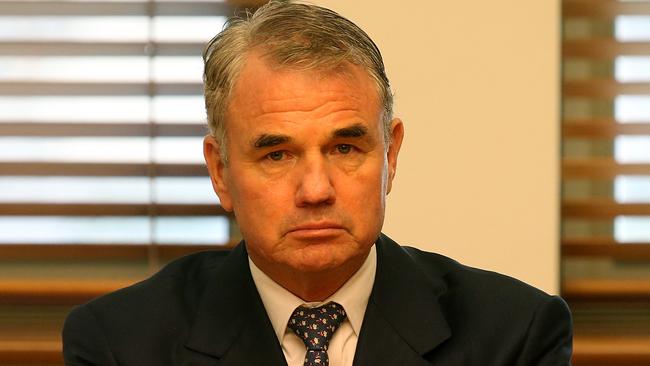Snowy Hydro bases growth on larger role for renewables
Snowy Hydro will cut its reliance on coal and gas-dominated electricity by underwriting wind and solar farms.

The government-owned Snowy Hydro will cut its reliance on coal and gas-dominated electricity from the big three energy generators by underwriting eight new wind and solar farms, adding 900 megawatts of supply to the national grid in a bid to cut spiralling power prices.
The $1 billion scheme aims to break the stranglehold of the big three “gentailers” by firming intermittent renewable energy supply with the company’s existing generation to push down prices and introduce new competition to the market.
Snowy, which has a million retail power customers through its Red and Lumo energy brands, says the deal will allow it to offer firm wholesale electricity below $70 per megawatt hour for up to 15 years by 2020 and allow it to avoid the price risks from buying power on the wholesale market, where prices have spiked on high coal and LNG tariffs.
The deal is proof that power players need to get on with business and look to add more capacity and lower prices despite the demise of Malcolm Turnbull’s national energy guarantee policy, Snowy says, adding it had already briefed Energy Minister Angus Taylor on its plan.
“Policy uncertainty is not a good thing but we think you need to get on with business,” Snowy chief executive Paul Broad said.
“We’ve gone out and tested the market and we were surprised by the quality of the bids we got and the price points and how it fits in our portfolio. It was a really pleasant surprise.”
Snowy approached wind and solar developers nine months ago as part of a strategy to secure long-term, lower pricing for its customers and reduce volatility from the power that it buys from the wholesale market.
After receiving 130 project applications totalling 17,600MW of potential capacity, Snowy selected eight projects in NSW and Victoria with combined supply of 888MW. Projects include those funded by Macquarie and energy giant BP.
Futures prices, which indicate what traders and power companies are betting prices will average next year, show Victoria and South Australia are now expected to have average annual power prices near or above $100 a megawatt hour in 2019, equalling the Victorian record.
Snowy says it will be able to supply the wholesale market well below those levels.
“The forward curve looks a bit higher and people get a bit nervous about that,” Mr Broad said. “But we would argue the price we are putting in the market place is significantly below any forward curve that any of the businesses would have. We will put significant downward pressure on the wholesale businesses, which will lead to significant downward pressure on energy prices.”
Power prices have remain stubbornly high in the national electricity market because of elevated prices for coal and gas, the closure of coal-fired power stations such as Victoria’s Hazelwood last year, a spike in network costs and continued uncertainty over government policies following the dumped national energy guarantee.
The big three — AGL Energy, Origin Energy and EnergyAustralia — contract more than half of the existing renewable energy capacity in the national electricity market and Snowy says much of that clean energy supply is effectively under-utilised given the dominance of coal in the grid.
“If the coal plant portfolios were able to soak up all the wind and solar they would not run it optimally because if you have the choice of ramping down a brown coal plant or turning your wind farm off, you’ll turn the wind off,” Snowy chief commercial officer Gordon Wymer said. “We don’t want our customers to experience oligopoly pricing in renewables as we have in the current pricing. It’s healthy for the national electricity market to get another player.”
Mr Broad also confirmed the company would make a final investment decision on its Snowy 2.0 pumped hydro project before Christmas, with the facility due to add up to 2000MW of generation on top of its existing 4100MW capacity.


To join the conversation, please log in. Don't have an account? Register
Join the conversation, you are commenting as Logout